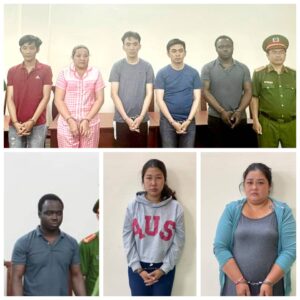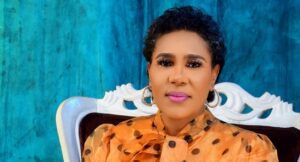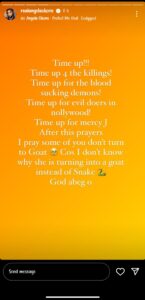Music Antiquity

Drawing of the tablet with the Hymn to Nikkal (c. 1400 BCE), the oldest of the Hurrian songs
Following the advent of writing, literate civilizations are termed part of the ancient world, a periodization which extends from the first Sumerian literature of Abu Salabikh (now Southern Iraq) of c. 2600 BCE, until the Post-classical era of the 6th century CE. Though the music of Ancient societies was extremely diverse, some fundamental concepts arise prominently in virtually all of them, namely monophony, improvisation and the dominance of text in musical settings. Varying song forms were present in Ancient cultures, including China, Egypt, Greece, India, Mesopotamia, Rome and the Middle East. The text, rhythm and melodies of these songs were closely aligned, as was music in general, with magic, science and religion. Complex song forms developed in later ancient societies, particularly the national festivals of China, Greece and India. Later Ancient societies also saw increased trade and transmission of musical ideas and instruments, often shepherded by the Silk Road. For example, a tuning key for a qin-zither from 4th–5th centuries BCE China includes considerable Persian iconography. In general, not enough information exists to make many other generalizations about ancient music between cultures.
SEE ALSO: The Influence of Afrobeat
The few actual examples of ancient music notation that survive usually exist on papyrus or clay tablets. Information on musical practices, genres, and thought is mainly available through literature, visual depictions, and increasingly as the period progresses, instruments. The oldest surviving written music is the Hurrian songs from Ugarit, Syria. Of these, the oldest is the Hymn to Nikkal (hymn no. 6; h. 6), which is somewhat complete and dated to c. 1400 BCE. However, the Seikilos epitaph is the earliest entirely complete noted musical composition. Dated to the 2nd-Century CE or later, it is an epitaph, perhaps for the wife of the unknown Seikilos.
China
Shang and Zhou
They strike the bells, kin, kin,
They play the se-zither, play the qin-zither,
The mouth organ and chime stones sound together;
They sing the Ya and Nan Odes,
And perform flawlessly upon their flutes.
Shijing, Ode 208, Gu Zhong
Translated by John S. Major
By the mid-13th century BCE, the late Shang dynasty (1600–1046 BCE) had developed writing, which mostly exists as divinatory inscriptions on the ritualistic oracle bones but also as bronze inscriptions. As many as 11 oracle script characters may refer to music to some extent, some of which could be iconographical representations of instruments themselves. The stone bells qing appears to have been particularly popular with the Shang ruling class, and while no surviving flutes have been dated to the Shang, oracle script evidence suggests they used ocarinas (xun), transverse flute (xiao and dizi), douple pipes, the mouthorgan (sheng), and maybe the pan flute (paixiao). Due to the advent of the bronze in 2000 BCE, the Shang used the material for bells—the ling (鈴), nao (鐃) and zhong (鐘)—that can be differentiated in two ways: those with or without a clapper and those struck on the inside or outside. Drums, which are not found from before the Shang, sometimes used bronze, though they were more often wooden (bangu). The aforementioned wind instruments certainly existed by the Zhou dynasty (1046–256 BCE), as did the first Chinese string instruments: the qin (or guqin) and se zithers. The Zhou saw the emergence of major court ensembles and the well known Tomb of Marquis Yi of Zeng (after 433 BCE) contains a variety of complex and decorated instruments. Of the tomb, the by-far most notable instrument is the monumental set of 65 tuned bianzhong bells, which range five octaves requiring at least five players; they are still playable and include rare inscriptions on music.
The monumental Bianzhong of Marquis Yi of Zeng, c. 5th century BCE, from Hubei
Ancient Chinese instruments served both practical and ceremonial means. People used them to appeal to supernatural forces for survival needs, while pan flutes may have been used to attract birds while hunting, and drums were common in sacrifices and military ceremonies. Chinese music has always been closely associated with dance, literature and fine arts; many early Chinese thinkers also equated music with proper morality and governance of society. Throughout the Shang and Zhou music was a symbol of power for the Imperial court, being utilized in religious services as well as the celebration of ancestors and heroes. Confucius (c. 551–479) formally designated the music concerned with ritual and ideal morality as the superior yayue (雅樂; “proper music”), in opposition to suyue (俗樂; “vernacular/popular music”), which included virtually all non-ceremonial music, but particularly any that was considered excessive or lascivious. During the Warring States Period when of Confucius’s lifetime, officials often ignored this distinction, preferring more lively suyue music and using the older yayue traditional solely for political means. Confucius and disciples such as Mencius considered this preference virtueless and saw ill of the leaders’ ignorance of ganying, a theory that held music was intrinsically connected to the universe. Thus, many aspects of Ancient Chinese music were aligned with cosmology: the 12 pitch shí-èr-lǜ system corresponded equally with certain weights and measurements; the pentatonic scale with the five wuxing; and the eight tone classification of Chinese instruments of bayin with the eight symbols of bagua. No actual music or texts on the performance practices of Ancient Chinese musicians survive. The Five Classics of the Zhou dynasty include musical commentary; the I Ching and Chunqiu Spring and Autumn Annals make references, while the Liji Book of Rites contains a substantial discussion (see the chapter Yue Ji Record of Music). While the Yue Jing Classic of Music is lost, the Shijing Classic of Poetry contains 160 texts to now lost songs from the Western Zhou period (1045–771)
Like Our Story ? Donate to Support Us, Click Here
You want to share a story with us? Do you want to advertise with us? Do you need publicity/live coverage for product, service, or event? Contact us on WhatsApp +16477721660 or email Adebaconnector@gmail.com









